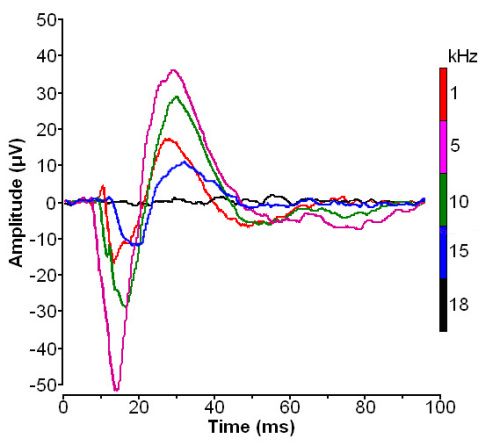Acoustic communication plays an important role in the reproductive behavior of anurans. Previous studies conducted by Professor Jun-xian Shen and his colleagues at the Institute of Biophysics, Chinese Academy of Sciences have demonstrated that male concave-eared frogs have ultrasonic hearing capacity and show hyperacute phonotaxis to female courtship calls (Nature, 2006, 2008). Although males of the concave-eared frogs (Odorrana tormota) have ultrasonic communication capacity adapted to the intense, predominately low-frequency ambient noise from local streams, whether the females communicate with ultrasound remains unclear.
The latest study "Ultrasonic frogs show extraordinary sex differences in auditory frequency sensitivity"highlighted in Nature Communications on 14 June at 1600 London time / 1100 US Eastern time solved the mystery.
The leading scientist and corresponding author of the paper, Professor Jun-Xian Shen and his colleagues performed acoustic experiments by playing back male mating calls to female O. tormota frogs. They found that the male’s calls evoke gravid females' phonotaxis and vocal responses, but not the ultrasonic components (frequencies above 20 kHz) do. This finding was confirmed by further electrophysiological studies of the female’s auditory midbrain with no response seen in the ultrasonic range. This shows that ultrasonic hearing has evolved as a form of communication only in the male frogs, and females exhibited no ultrasonic sensitivity. Thus, O. tormota is only the species having such noticeable auditory sex differences known in vertebrates.

Fig 1. Averaged auditory-evoked potential data from the torus semicircularis of Odorrana tormota. Shown are representative AEP waveforms recorded from the female TS in response to twenty tone bursts presented at frequency range 1-14 kHz, a rate of 1/s and 90 dB SPL. The AEP (blue curve) was recorded at 15 kHz, 103 dB SPL; AEP (black curve) at 18 kHz, 110 dB SPL .by Jun-Xian Shen.

Fig 2. Chinese concave-eared frogs (Odorrana tormota) in amplexus, showing remarkable sex difference between a male with ear canals (above) and a gravid female without ear canals (below). Photo by Jun-Xian Shen
|